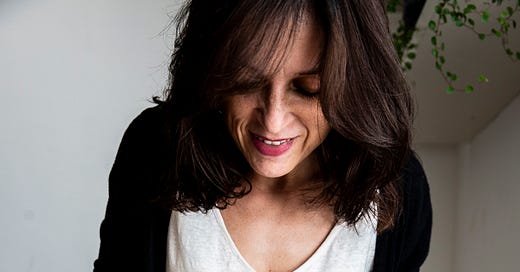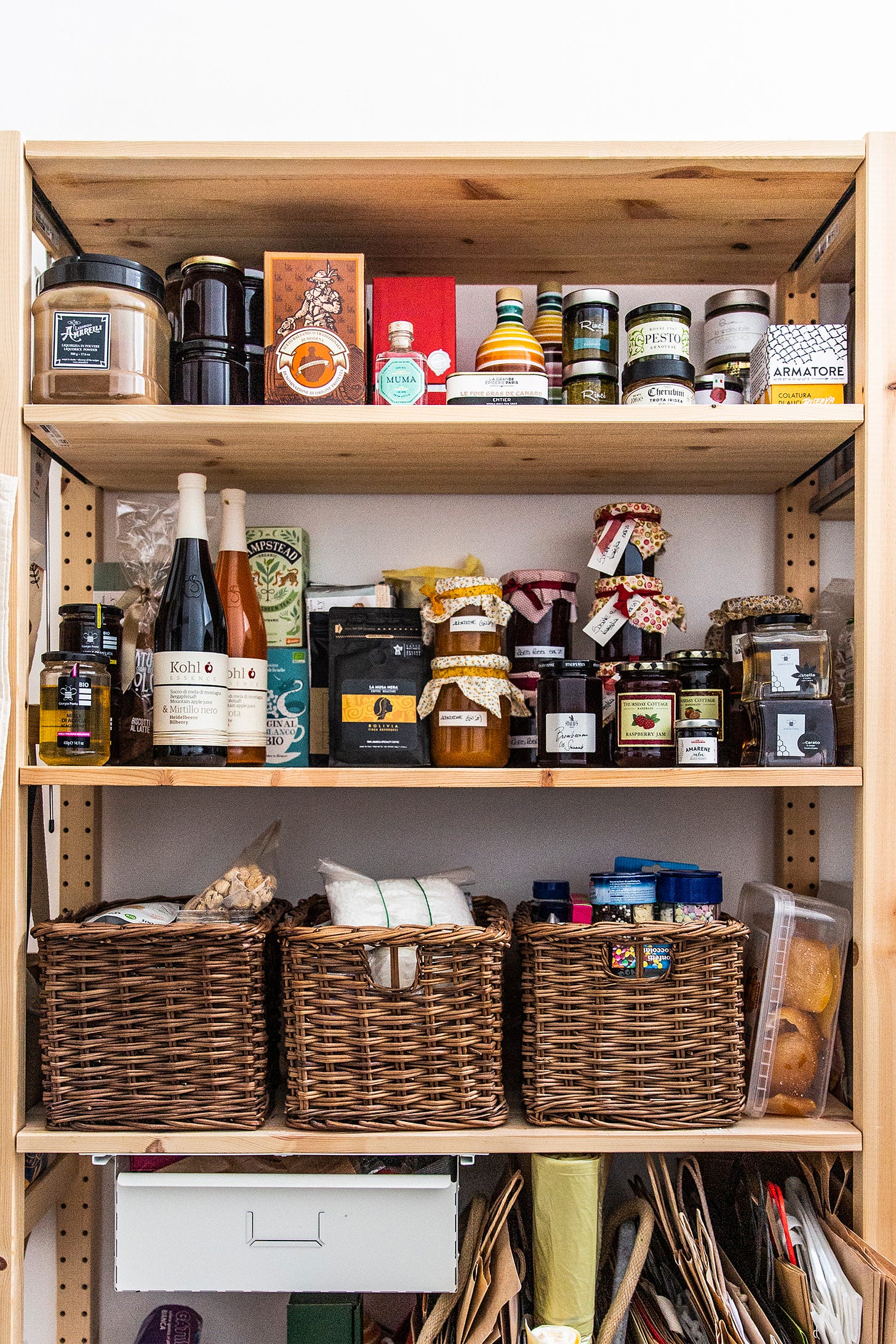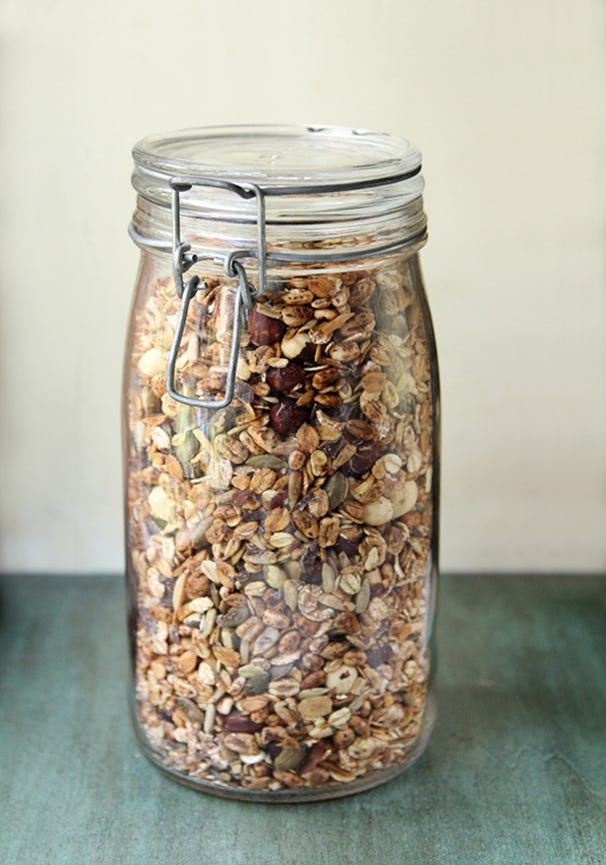Other people's pantries. Q&A with Rossella Venezia
A food photographer who bakes bread and loves almonds, honey, flour and cookies | A pantry between Marche, Rome and Basilicata, and a strong French influence
Today I’m so excited to share another interview for Other people’s pantries, a series of Q&A with a focus on pantries as a privileged way to get into people’s lives, cooking styles, and favourite recipes. It is also an opportunity to chat with professionals I admire, and with friends with whom I have shared an important part of my personal and professional growth.
Today we have a special guest, a volcanic, passionate woman, an exceptional food photographer - one of the best we have in Italy in my opinion - and one of the first blog friends, with whom I also share part of my origins (her family is also from Melfi, Basilicata).
Today we chat with Rossella Venezia.
You can find Rossella on Instagram: @vanigliacooking and on her blog, where she shares all her recipes: Vaniglia Storie di Cucina
Part of our conversation is paywalled, and the subscribers will find Rossella’s recipe for chocolate granola.
When you join our subscription-based newsletter, you are actively contributing to the making of Letters from Tuscany.
Ciao Rossella, can you briefly introduce yourself?
My name is Rossella and I deal with recipes, photos and stories that gravitate around the kitchen. I see the kitchen as a mirror of the territory, its history, and of physical and spiritual places. I am also an architect, with all the many facets that this profession often brings: in my specific case, I am passionate about landscape and the environment, interior design and plants, knitting and crocheting.
But the central part of my job is cooking and taking photos.
What is your relationship with the pantry? And what has been the role of the pantry in your family?
My relationship with the pantry is very complicated! Often my job requires not only photographing but also developing recipes and preparing the dishes featured in my photos, so this calls for a fairly large pantry, in terms of space and variety. By pantry, I mean everything that must be in the house by default, from flour to pasta to canned food.
My pantry is chaotic and organised at the same time. And it is basically located in two different parts of the house.
There are those things that absolutely have to be no more than arm's length away from me when I am cooking because although I think about the recipes before I make them, it is in the very moment that I begin cooking that the ideas really happen, and I basically revolutionise everything. So, I have to have certain things very close at hand in these moments: definitely, extra virgin olive oil, even more than one type (an intense one, maybe a monovarietal, and a milder one, plus a spicy, one of my soft spots), a specific oil for frying and seed oil. There is then Sapa, a cooked must typical of my region, Marche, but also of the neighbouring Romagna region with which we share and contend a lot of recipes. I need to have ad hand a couple of balsamic vinegars (more or less aged), whole dried or already chopped chilli peppers, various types of salt (coarse, fine, unrefined, pink, flaky), all kinds of spices and seeds, dried oregano and bay leaves, a couple of sauces such as Worchester and tabasco, vinegar, and so on and so forth. Then the sugar, three basic types, that is, the very classic white caster sugar, brown sugar in crystals, and an unrefined one. Oh, and there’s also a fourth one, cassonade, a sugar obtained directly from sugar cane juice, refined only once, and very popular in Belgium and Northern France.
The most important ingredient, though, is honey, which comes in many different types because my partner Giorgio is a nomadic beekeeper - he takes his bees to specific flower fields at specific blooming times and thus produces monofloral honey (acacia, chestnut, orange and linden the most common ones, Stachys, rapeseed, dandelion, sunflower and ivy the others). I keep close to my kitchen also all the 'pastry basics': baking powder, cocoa, icing sugar and all the dried fruit, plus two or three basic flours, i.e. for me wholemeal flour, bread flour, and one in rotation according to my mood at the time (type 1 or semolina, 00 or gluten-free, oat or spelt...).
In the distant pantry, the one with a dedicated room, there are the whole packs of what's open in the kitchen, or the stock: honey, aged vinegars, extra virgin olive oils, juices, plant-based milks, my beloved jams (homemade or those I buy as souvenirs during my travels), a few packs of artisanal cookies (as I love to bake everything at home), colatura di alici [an Italian fish sauce made from anchovies in the village of Cetara, Campania], and tomato preserves.
Then there are various types of pasta, mostly artisanal or produced in the Marche region, and three baskets containing 'pastry complements', mostly used for photo shoots for cooking magazines or some other specific project: one with dried fruit, one with chocolate, one with sugars, sprinkles, meringues…
A place of honour goes to flour, my favourite ingredient (sometimes I wonder if I am not made of flour myself). No less than two (and counting) shelves.
The first shelf is that of soft wheat flours: from the most refined to wholemeal, finishing with semolina and bread flour. This very precise succession allows me to walk in and quickly grab what I need, and easily check which type of flour is ending to restock it.
On the upper shelf, I keep all the special flours, such as buckwheat, oat, spelt, Kamut, enkir, rice, corn, teff and sorghum, and then all the other specific gluten-free ones, such as thermo-treated, or flours made from dried fruits, such as almonds or hazelnuts, or from pulses or chestnuts... up to flax flour. There is also barley malt, guar gum, xanthan and more strange stuff.
My family relationship with the larder has influenced the way I think about 'my' food and part of what I develop for third parties: respect and inventiveness to avoid waste in the kitchen have always characterised my family’s approach to food, for generations now, and influenced the way I look at food and think about recipes.
You are a food photographer, how has this influenced your relationship with the pantry?
Yes, my work has influenced my relationship with the pantry. On one side, we like to eat local products or those we get to know while travelling, or homemade ingredients. On the other side, though, as I tend to develop and photograph so many recipes, it wouldn’t be sustainable to use just special and homemade ingredients in the kitchen, so I rely on more commercial ingredients which I trust.
So despite the truly exhausting quantities of dishes that travel around the house, my respect for food has remained very high, starting right from the pantry, even though here you could find different levels of quality of the ingredients.
You have Lucanian origins, you are from Marche and now live there, but you lived in Rome for many years. How do these three regions come together in your pantry?
I'd say chilli pepper and caciocavallo cheese for Basilicata (caciocavallo at my grandparents' house was kept in the cellar, hung to a wooden beam); Giorgio's honey and paccasassi pesto for Marche (paccasassi is the dialect name for sea fennel, or samphire, a spontaneous herb that grows on the coastline of the Conero area); pecorino cheese (from Picinisco, which I discovered in Rome years ago) and Gaeta olives for Rome and Lazio. I add my fourth soul place, France, which is showing through my love for homemade and store-bought jams and bread.
What are the basic ingredients of Marche cuisine?
Probably lard, and pork in all its parts. I'm talking about the inner areas here, as the local Marche cuisine varies dramatically from what you can find on the coast and what is common in the hilly inner areas. Then I'd say corn flour, and some foraged herbs.
Which is your must-have pantry ingredient?
Butter, milk, bread.
But as these are fresh ingredients, if we want to talk about the pantry, I would say fruit preserves and jams.
Both sweet and savoury homemade preserves are, for me, the centrepiece of the pantry. They represent the eternal effort of men who try to steal the essence of a fruit, of a flavour, of a season and imprison it in a jar, to preserve it for when Nature won’t be able to provide it.
Do you have a favourite recipe to make with pantry staples?
Bread of course!
Does a pantry well stocked with good flours help baking?
I would say yes, definitely. It is important to know your flours, to use them respecting their characteristics, knowing what you are going to ask of them. Then, of course, the yeast and the oven also help a lot. And instinct. I am a great advocate of instinct in the kitchen.
Last but not least, would you share a recipe to make something to keep in the pantry?
I’ll share the recipe for one of the products that is almost always present in my pantry, as I make it 2-3 times a year in industrial quantities: chocolate granola!







